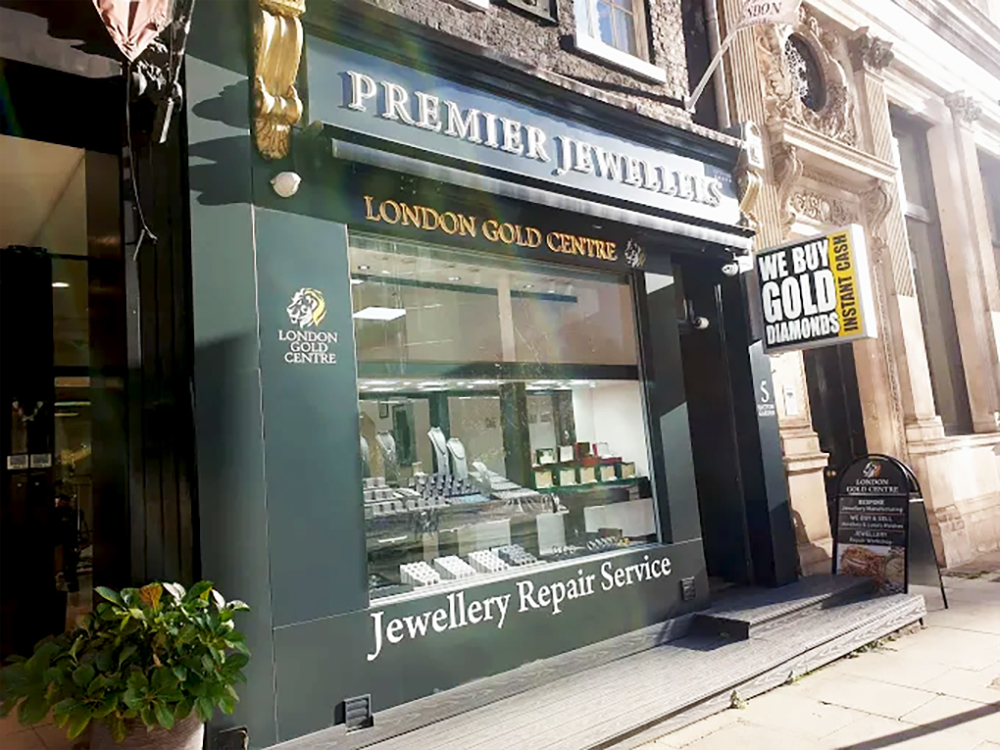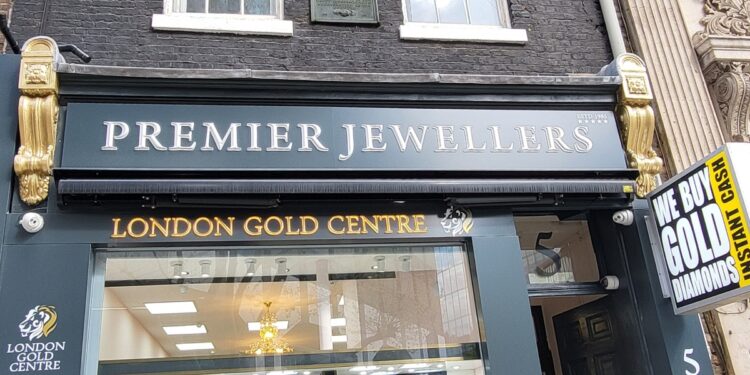Gold trading should be complicated. After all, you’re dealing with a commodity that’s underpinned empires, sparked rushes across continents, and served as the ultimate hedge against uncertainty for thousands of years. Yet walk into London Gold Centre on any given Tuesday, and you’ll witness something almost mundane: straightforward transactions, clear pricing, and people actually understanding what they’re buying or selling. No theatrics, no pressure, no confusion. Just business done right.
This simplicity feels almost radical in Hatton Garden, where the jewelry and precious metals trade has operated for centuries. At number 5, London Gold Centre has carved out a reputation that’s reflected in nearly 700 Google reviews averaging 4.9 stars—numbers that suggest they’ve figured out something their competitors haven’t. The family-run operation, backed by parent company Premier Jewellers (established in 1983), has spent four decades refining a straightforward approach to what many consider an opaque industry.
The company operates as both buyer and seller of precious metals, handling everything from grandmother’s broken gold chain to investment-grade platinum bullion bars. What’s interesting is their range—while most dealers stick to gold and silver, they also handle platinum, palladium, and even rhodium, those rarer metals that many shops won’t touch because the markets are more specialized. Whether someone’s selling a platinum wedding band, industrial palladium from old catalytic converters, or rhodium-plated jewelry, they apply the same transparent approach to valuation.
Their buying inventory runs from tiny 1-gram gold bars that first-time investors can afford to substantial silver and gold bullion for serious portfolios. They stock the popular coins too—Gold Britannias and Sovereigns that come with Capital Gains Tax exemption in the UK, a detail that matters more than most people realize until they’re ready to sell. For those interested in silver, they offer everything from Silver Britannias to larger investment bars, all priced according to live market rates.
What’s genuinely refreshing about their approach is the transparency across all metals. Prices update every five minutes based on live market rates for gold, silver, platinum, and palladium, displayed clearly for anyone to see. They’ve adopted what they call a “no brand bias” policy, meaning a gram of any precious metal is worth the same whether it’s stamped by The Royal Mint or a lesser-known refiner. It’s the weight and purity that matter, not the logo.
Customers can buy gold and other precious metals online or visit the showroom, where staff actually explain the differences between products without the hard sell. They’ll tell you why some investors prefer gold coins over silver bars, or why platinum carries different tax implications than gold. It’s education without condescension, expertise without arrogance.

The selling process reveals the same philosophy, whether you’re offloading gold jewelry, silver coins, or platinum rings. Walk-ins are welcome seven days a week without appointments. They test your metals using X-ray fluorescence technology—a method that works equally well on gold, silver, platinum, palladium, and rhodium. No destructive acid tests unless absolutely necessary for plated items. Everything happens in front of you. No back rooms, no mysterious calculations. They make an offer based on that moment’s spot price for whichever metal you’re selling, and you either accept it or you don’t. Payment comes as instant cash or bank transfer, your choice.
For those who can’t make it to Hatton Garden, there’s a postal service for selling gold and other precious metals. Unlike competitors who quietly deduct postage costs from final payments, London Gold Centre pays the full quoted price. They’re equally clear about what they won’t buy—no plated items that merely contain traces of precious metals, no costume jewelry. This saves everyone the awkward moment of discovering that inherited “platinum” necklace is actually stainless steel with wishful thinking.
Their Hatton Garden location matters more than just as an address. This district has been London’s precious metals hub for generations, creating natural competition that keeps prices honest for all metals, not just gold. Customers can check three other dealers within a five-minute walk, which means everyone needs to offer genuine value to survive. The area also provides the security infrastructure essential for high-value transactions—specialized protocols and systems that protect both buyers and sellers, whether they’re carrying gold bullion or a bag of mixed precious metal jewelry.
Beyond the transactions themselves, London Gold Centre seems to understand that knowledge reduces anxiety. They provide detailed explanations about CGT exemptions on certain gold products, VAT implications for silver and platinum, and the practical differences between various investment options. They’ll explain why Silver Britannias might suit one investor while gold bars work better for another, or why someone might consider platinum despite its volatility.
The personal touch persists despite—or perhaps because of—the straightforward approach. Each transaction gets individual attention, whether it’s someone selling a single silver ring or building a diverse precious metals portfolio. Staff remember regular customers, understand their preferences, and treat the nervous first-timer bringing in mixed scrap metals with the same respect as the seasoned trader with investment-grade bullion.
This combination of transparency, education, and respect has sustained them through volatile markets and economic upheavals. While precious metal prices swing wildly and new online platforms promise to revolutionize trading, London Gold Centre continues doing what they’ve always done: making the complex simple, the opaque transparent.
There’s something almost countercultural about their approach in an age of algorithmic trading and cryptocurrency speculation. No apps to download, no accounts to create, no membership tiers to unlock better prices. Just a shop where you can walk in with any precious metal—gold, silver, platinum, palladium, or rhodium—and walk out with cash, or arrive with money and leave with tangible assets. The fact that this feels revolutionary says more about how complicated we’ve made simple transactions than anything else. Maybe that’s why, after forty years in one of the world’s most competitive precious metals markets, they’re still here, still busy, still keeping it surprisingly simple.




































